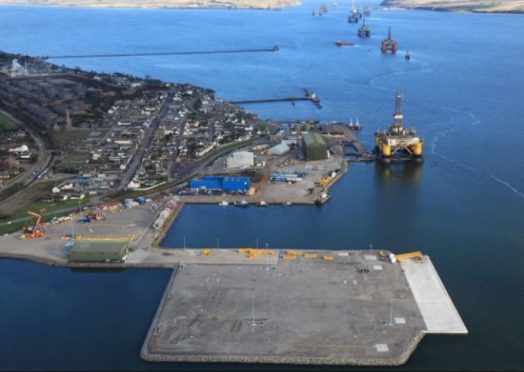People are fairly quick to throw a party in Cromarty. But there has been quite a delay in the community toasting one significant local result.Cromarty
In December the Cromarty Firth Port Authority (CFPA) – or the Port of Cromarty Firth as it prefers now to be known – published its winter newsletter. A short paragraph was enthusiastically welcomed.
“SHIP TO SHIP UPDATE Due to higher priority projects the Port will not be pursuing the re-submission of our ship to ship at anchor application.”
Three years earlier local residents were alerted to plans by the CPFA to transfer up to 8.64 million tonnes of crude oil annually between tankers at anchor just outside the mouth of the Cromarty Firth.
Cromarty was the closest settlement, but neither its community council nor its Highland councillors had been informed. A small advert in a local paper saying the CPFA was applying for a licence to the Maritime and Coastguard Agency (MCA which reports to the UK Department for Transport DfT), was the closest it came to prior public consultation.
The plan was met by environmental outrage. A dolphin expert warned “If you were trying to find a place in Europe that posed the maximum risk to a protected dolphin population, this would probably be it.”
There was local unanimity an oil spill could not only herald environmental catastrophe, but would sabotage the local economy. The group Cromarty Rising was formed and took the fight to the MCA, the Highland Council, Holyrood, Westminster, the European Commission and the General Assembly of the Church of Scotland.
This was not ‘nimbyism’. Cromarty had been happy to live with the oil industry in its backyard for decades.
The community was annoyed that CFPA was repeatedly arguing that ship-to-ship oil transfers had been conducted safely in the firth for 30 years. This was entirely true, but seen as disingenuous. Earlier transfers had involved one tanker tying up to the long jetty at Nigg with a second one securing itself alongside – safer by far than at anchor in open water.
Well over 100,000 signed a petition against CFPAs plan and 27 local community councils around the wider Moray Firth objected or expressed their concern.
The dysfunctionality of the UK DfT/MCA deciding on environmental risk, when the Scottish Government was responsible for protecting that same marine environment under European law, was rightly highlighted.
The MCA, however, was unimpressed by the application and in 2017 directed CFPA to submit another one after further consultation. The port said it would.
In succeeding months, however, there was a change of thinking within the Scottish Government. Internal emails released under FOI, showed the initial position of senior civil servants was to support the oil transfer plan.
But as campaigners highlighted the risks, politicians at the top decided the Scottish Government was “unconvinced” CFPA’s plan would not result in an unacceptable risk to the marine environment.
It is understood that Scottish ministers behind the scenes robustly “discouraged” a second MCA application. But they valued CFPA’s economic activity and committed £7.75 million towards a £30 million new CFPA quayside at Invergordon – announced in November,
Cromarty Rising’s petition lodged at Holyrood is still live. It reasonably seeks: legislation to prevent ship-to-ship transfers of crude oil in environmentally sensitive locations and measures to “enhance the accountability of (all) trust ports to their stakeholders”.
The campaign had exposed an accountability deficit. The Scottish Government’s agency Transport Scotland (TS) confirmed it cannot interfere in trust ports’ business. Even Scottish ministers can’t. TS has a code of practice for these ports, which declares they “manage the assets of the trust for the benefit of stakeholders” including local communities and businesses. But if stakeholders fear their port is acting against local interests, they can only seek redress in court, with associated costs.
Meanwhile under the 1973 act which set up CFPA, a government minister would oversee/approve the appointment of directors.
Three years ago legal arguments for a court action against the CFPA (subsequently settled) revealed it had submitted a document in 2003 called a confirmation order. Accepted by the Lab/Lib Dem Scottish Executive, but not debated by MSPs, this effectively allowed the port authority to appoint its own directors. Other ports including Aberdeen followed suit.
South of the border the Secretary of State for Transport (DfT) still appoints the chair of the five largest trust ports in England and Wales – Dover, Harwich Haven, Milford Haven, the Port of London Authority and the Port of Tyne and some non-executive directors. Crucially, if not satisfied with a trust port’s response to a complaint, stakeholders can appeal to DfT to intervene.
How can it be right that a body created by a UK act of parliament to manage a waterway created by nature in Scotland, is no longer subject to similar democratic accountability
Doubtless Scotland’s trust port boards are comprised of upstanding men and women. But there should be greater protection of the local public interest in the operation of the largest trust ports, as in England and Wales.
Approval of board appointments, and a statutory ministerial duty to ensure they operate in the interests of local stakeholders, would be reasonable reforms.
Maybe then Cromarty can have its party.
David Ross is a veteran Highland journalist and author of an acclaimed book about his three-decades of reporting on the region











